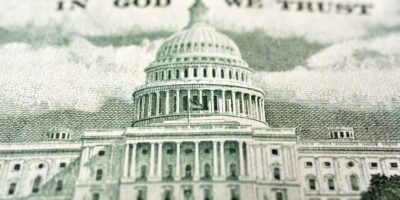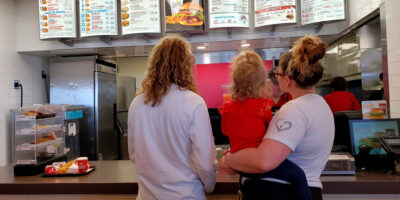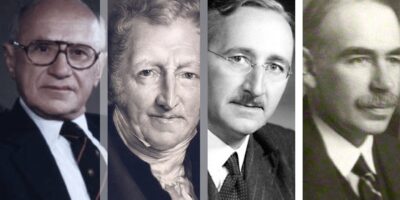How to Teach the Benefits of Trade

College students today appear to be embracing a growing sense of economic pessimism about the future. A constant barrage of news stories regarding student debt and wealth inequality and the automation of jobs provides them fodder for thinking that their standard of living will be worse than that of their parents. All of this gloom is despite a contemporary economic landscape that is vibrant and long-term historical evidence that things are getting better.
There are a number of reasons for such malaise amongst the young, including advocacy groups that have a motive to keep people fearful. But one important factor in the mix may be the lack of understanding students have of a basic economic concept – gains from trade. Our overemphasis on macroeconomic predictors, equilibrium analysis, and memorizing mathematical formulas has undercut the ability of students to develop an intuitive understanding of one of the most basic wealth-enhancing characteristics of human behavior – our propensity to truck, barter, and exchange.
The notion that trucking, bartering, and exchanging leads to prosperity is, of course, attributed to Adam Smith in the first pages of his foundational work An Inquiry into the Nature and Causes of the Wealth of Nations. In spite of the simple concept that exchange allocates resources to their best use, students still struggle with this idea. To help make this concept both intuitive and vividly real, I developed a simple classroom exercise that illustrates the wonders of exchange and the wealth-generating power of the gains from trade.
This exercise was inspired by Kyle Macdonald’s amazing story of how he turned a single red paperclip into a two story farmhouse in rural Canada. Through a series of fourteen trades that included an antique doorknob, a neon beer sign, a KISS motorized snow globe, and time spent with Alice Cooper, this “between jobs” Canadian blogger managed to do what most people would consider inconceivable – obtaining a livable house without having to take out a loan or spend a fortune. All he started with was a common office supply. His “magic trick” was to simply make other people better off, which led to a journey filled with economic optimism.
To communicate this lesson that gains from trade makes everybody better off, I devised a simple contest. The first person to take a paperclip (that I generously provided) and trade up for $75 worth of pizza would earn an automatic “A+” on their final essay (provided that they still wrote the essay). The pizza would then be served as lunch to the other 20 students in my seminar on the last day of class. Initially, I had committed to doubling the $75 to ensure an adequate food supply.
Knowing that a perfect grade might inspire some nefarious behavior (cf. Varsity Blues), I placed a few simple rules on the contest to mitigate the possibility that students would outright purchase a “victory” for $75:
- The student must make a minimum of five trades.
- All trades must be documented and verifiable with the photos and contact information of the trading partner. (Again, this was to check the plausibility of the trades and ensure nobody was just “buying a grade.”)
- Trades may not involve alcohol or other illicit goods/services (to avoid problems with the university administration and keep my name out of the news).
- The student cannot add their own resources to a trade, eliminating the possibility that a student would say, “I will trade you a paperclip and $75 of my own cash for a pizza gift card.”
- Students may not use “pity” as a marketing device for trades. In other words, students were prohibited from telling their trading partners that the end goal was to get a good grade on an essay in order to avoid failing a course.
- Students may not trade with anyone else in the class (i.e., my version of antitrust legislation).
- Students may not trade while in class (as I want them to pay attention to my brilliant lectures regarding gains from trade).
With these rules in place, I figured that it would take at least six or seven weeks to complete the task, if it could be done at all. Note my own degree of pessimism about human nature here.
The first time I used this exercise, I was astounded by the results. Within 72 hours, not only did one student complete the task, but two students finished it almost simultaneously. It was then that I realized our pizza party could be much more bountiful than I had anticipated and declared both students to be the victors. From that point on, the rules were modified to allow for two “winners,” as we would result in a bigger feast for the entire class (who were also “winners” in this game).
The results of the most recent contest illustrate how creative students can be when empowered with the notion that trade creates wealth. In my autumn 2019 Adam Smith Seminar, two – Jacob and Byung – met the challenge in less than 48 hours, a new record for the “velocity of trade.” Each student employed a different strategy, revealing there are many paths to entrepreneurship.
Jacob’s trading strategy relied upon having known what different people in his workplace wanted but didn’t have. The first trade involved the paperclip for a cheap, novelty mug that was given to somebody yet was unwanted, a sign of deadweight loss perhaps. The owner of the mug couldn’t bring himself to throw away this gifted item, but when given the opportunity to trade for a paperclip felt that this was a means of clearing off some shelf space and handing it over to somebody who might actually appreciate it. Jacob possessed the knowledge that somebody else desired that mug and leveraged that information.
This strategy turned out to be the first step in successfully completing the trading chain: find something that somebody considers useless but still might have some value to others and connect those individuals via exchange. A paperclip is fairly common and can be found laying around any office with little effort. But an unwanted mug sitting on a shelf has even less value to the person who does not want it, yet is too lazy to dispose of it. Jacob provided a valuable service by realizing that one person’s trash is another’s treasure. Knowing where to look helped to capture the first gains from trade.
Realizing that another person wanted that mug, Jacob’s next step was to discover what that person was willing to give up. It turns out, as well, that this person had something they no longer valued but was desired by someone else – a garage door transponder (typically priced at about $50, but was just “junk” to the person holding it). Jacob then took the transponder and exchanged it for a set of interior plants. These plants then became a way to entice another person to give up an unused floor safe that was taking up space in somebody’s apartment (as they had just purchased another, bigger safe). It just so happened that Jacob knew that his boss had been wanting a new safe and had a $200 gift card for a local restaurant. The final link in the chain came when Jacob traded the $200 restaurant certificate to obtain $150 worth of Domino’s pizza.
As Jacob wrote in his documentation of these trades, “For me these trades were due to an accurate knowledge of what each [person] was willing to give up as a trade to ultimately gain access to what I needed. [Bob] had been receiving grief for his mug… and I knew that item would have been traded so it was off his plate. I knew that [Margaret] liked this mug due to previous comments in a meeting.” And so it followed with the rest of the trades. Jacob’s entrepreneurial strength was in continually observing those around him to discover how he could make their lives better. Awareness is crucial to entrepreneurs. And then by fulfilling all these needs, he made himself (and our entire hungry class) better off.
The second winner of this contest was Byung, who approached things differently. Instead of observing and already knowing the needs of others, he set out to market his wares so as to convince others that they could improve their lot. His first step was to convince his former teaching assistant that he needed a paperclip and would be happy to take an extra 0.5mm ballpoint pen that the TA had laying around. He then shopped this pen around to others touting the superiority of the pen he had and resulting in exchanges for different colors and styles of writing utensils. After trading pens for some time, he finally convinced another dorm resident to swap an erasable pen for a poster of a Husky dog, our school’s mascot. The poster then became a coupon for one free “welcome new student” pizza, which then was exchanged for a pair of wired Apple earbuds, which were not as useful to the person who just purchased a wireless pair. The earbuds were then traded for a football ticket (to the coveted Apple Cup), and the football ticket for $75 in pizza gift certificates.
In contrast to Jacob who was observant of people’s needs and just needed the opportunity to satisfy them, Byung’s strategy was to convince folks of the efficacy of trading one thing for another. Sometimes individuals don’t know their wants or needs until somebody helps make them apparent.
Byung and Jacob were not the only ones to benefit from this exercise (for which they received an A on their well-written essays); the entire class was the recipient of their labors. We all enjoyed a hearty lunch of pizza, chicken wings, and breadsticks. There are positive externalities to exchange, and this contest was designed to make that evident. (Being the savvy entrepreneurs they were, Jacob and Byung placed their order on a day that the local pizzeria was offering a two-for-one lunch deal Thus we had more food than we could actually finish, allowing some folks to take pizza home for subsequent meals.)
More importantly, though, the students in my seminar came to the realization that opportunity constantly presents itself to them and that trade does actually make everybody better off. Mugs that nobody wanted were now in the possession of those who desired them. Somebody who wanted plants to brighten their office had their wishes fulfilled. And someone else who desperately wanted to see the Huskies play football helped to feed an entire class of students starving for food and economic knowledge.
Perhaps the most telling moment came during office hours when another student mentioned that he didn’t think such trades could be pulled off as fast as they were. In an environment that constantly presents us with pessimistic reasons why things cannot be done, turning a paperclip into $225 of pizza in less than two days proves that opportunities to make everyone better off exist all around us if we just take the time to observe and act. That lesson most certainly became the greatest food for thought.










